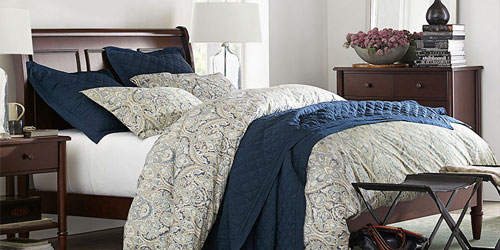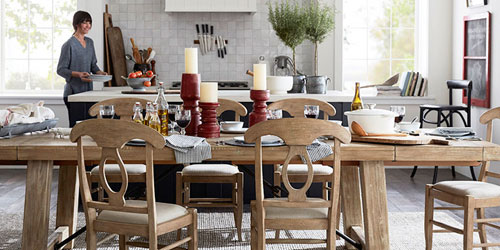How to
Make a Floral Centerpiece Using Vase Fillers
Vase fillers are a versatile decorative tool that you can use in several different decorating projects, from filling a lantern to decorating a bowl and, as you see in this video, filling out a floral centerpiece. While flowers look lovely on their own in a vase, vase fillers are some stellar supplies that can help you take your floral displays to the next level. With the right vase fillers, you can help anchor and embellish your flower arrangements for more elaborate and sophisticated designs.
In this arrangement, Pottery Barn’s floral designer Nico De Swert uses river rock vase fillers to create a simple but impressive arrangement of hyacinth flowers. Hyacinths are lovely to look at, and they also have a delicate floral scent that will fill your room, adding another dimension of enjoyment for this lovely display. This centerpiece looks lovely on a spring or summer table that’s set for anything from a special family brunch to a large dinner party with your favorite friends.
Start with a large, clear rectangular vase. Nico is using a vase that’s about 12" long, but you can choose a larger or smaller vase to suit the scale of your table or centerpiece configuration. Just scale the quantities used in the arrangement up or down.
Use river rock vase filler as your base. Nico has chosen small pebbles that are about an inch in size and have a silvery-gray color. You can choose rocks of different colors in slightly different dimensions, but be sure to choose rocks that are on the smaller size so you can easily arrange the flowers inside the vase.
You’ll also want to gather several hyacinth bunches, which you can buy potted from a nursery or garden center or cut at a florist’s shop. If you choose potted hyacinths, unpot them, leaving the bulbs intact, and rinse off any remaining soil. Hyacinths have leaves that are similar to tulip leaves, but the star-shaped blossoms grow in tight clusters on tall spikes. They come in a variety of different colors ranging from blue and purple to red and pink and even yellow, orange and white. Essentially, you can get hyacinths in just about any color that flowers come in. Nico is using pink and white in the video, but you can use any color that works for your display.
Take your clean hyacinths with attached bulbs and place them in a bucket of fresh water while you prepare the vase. Gently add half of your river rocks to the vase, taking care not to crack or otherwise damage the glass. Then, use floral clippers or clean scissors to trim the roots on the hyacinth bulbs to about an inch in length. Leave them intact so the hyacinths can stay alive in your arrangement. This way, your arrangement lasts for weeks rather than days.
Place your hyacinths in a row in your vase, nestling each bulb into the river rock base. You can alternate or cluster colors as you see fit. If you have the depth available in your vase, you may want to try staggering the bulbs so they aren’t in a perfectly straight row to create more dimension in the arrangement. Once you’re satisfied with the placement, you can take the rest of your river rock and gently add it into the vase, distributing it evenly amongst the hyacinth bulbs. You may want to use small handfuls at a time and add the rock by hand so you don’t disturb the bulbs or risk damage to the vase. This extra quantity of rock helps steady the bulbs in place, which is why it’s a wise idea to add it half and half rather than all at once at the beginning.
Add water once you’re done, but not too much. The roots should be wet, but you don’t want to allow the bulbs to get too wet. If you keep the water replenished, your hyacinths can continue to grow, giving you a long-lasting arrangement. Take care to place the vase in an area that gets a good amount of natural light so the hyacinths can photosynthesize and continue growing. You can set candles on either end of the arrangement to impart extra elegance.


